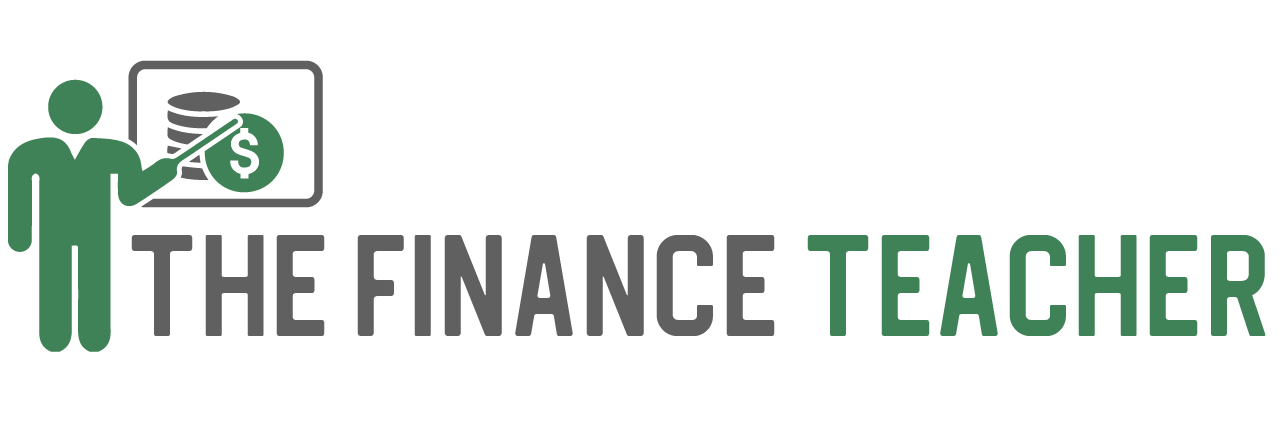Welcome To Your Teenage Guide To Getting Rich Slow
This blog post is an introduction to the supposed secrets of the rich. It is your very simple teenage guide to getting rich slow. That’s right, this is no ‘get rich quick’ scam. Growing your wealth doesn’t have to be complicated. It can be simple, but that doesn’t make it easy. The tips outlined here require discipline and most importantly they require patience.
Table of Contents
ToggleWhy Is This For Teenagers?
Are you a teenager trying to understand how the world of money works? Are you frustrated that you don’t really learn about making money at school? Do you aspire to live a wealthy life in the future? Well, why not start as early as possible? Your teenage years are exactly when you should be thinking about these things. Let’s get started with all of the things that you really need to know.
What Does The Education System Teach Us?
The education system is still operating based on the goal of preparing students to be productive workers. The jobs you will end up working in may not even exist yet, but you are still being taught knowledge and skills in a way that has remained largely unchanged for generations.
Some subjects may provide benefits in terms of skills that will allow graduates to become problem solvers, critical thinkers and information gatherers. These will no doubt come in handy. Other subjects will provide less value for the majority of the next generation. (I’m still waiting for that day when the calculus that I learned in Grade 12 Mathematics will provide me with some value)
Yet while many subjects provide questionable value, some of the most basic, yet crucial, knowledge and skills are still being neglected. Financial literacy and the knowledge of how to create wealth in ways other than working a 9 to 5 job should be required in secondary school. Imagine if rather than learning trigonometry or poetry, we learned how to balance a checkbook, invest in the stock market or start a small business.
I’ve nothing against mathematics or poetry. I still remember every word of Robert Frost’s “The Road Not Taken”. Unfortunately though, for the education system, the road not taken is the road to the very financial freedom that we all desire.
How’s Your Relationship With Money?
Before we take that first step in understanding how the world of money works and how to think like the rich, it is useful to consider how we feel about money and how we currently treat it. People have different relationships with money. You’ve no doubt heard it said that ‘Money can’t buy happiness’. There are plenty of miserable rich people to support this view.
Some say that ‘Money is the root of all evil’. It certainly can be. But it can also be the opposite. You may have also heard that ‘Money buys freedom’. This is the one that I’m most interested in. My grandfather always said that ‘Time is money’. Well if time is money and we know that time is limited, can we buy some of this time with money?
Financial Freedom
The term financial freedom can mean different things to different people. It could mean that you can retire and live off your investments. Or it could mean that you can cope with any financial situation or emergency that arises, or that if you lose your job then you can take a holiday instead of needing to find another one straight away.
It could mean you can afford to take up your dream job for half your regular salary. It could just mean you are living a happy, rewarding life without any financial stress. Regardless of what it means to you, it is a worthy goal, but one that most people fail to achieve. An even more worthy goal is the goal of achieving financial freedom well before the normal retirement age. I think this should be achievable for us all.
Becoming rich or financially free isn’t easy. But it can be simple. Let me introduce you to 5 simple steps that will put you on the path to wealth, freedom and a life full of possibilities.
Pretend you’re in school for a moment. And your teacher starts the lesson in a way that you’ve never heard before. ‘Good morning class. Do you want to be rich? Here’s everything that you need to know.’ Now you’re paying attention!
5 Teenager Steps For Getting Rich Slow
Step Number 1: Spend Less Than You Earn
Start spending less than you earn and save the difference. As a teenager, you may not yet earn anything. But it is important to start the process of developing good money habits as soon as you can. If you receive an allowance or if you have a part-time job, then this is where it all begins. Whatever money you receive, just make a conscious effort to keep some of it. It’s not how much money you make that matters. It’s how much you keep.
It is our savings that are used for investing which is how we make our money grow. So start with saving at least something from every small amount of money that you receive. This may be purely symbolic, to begin with. But it is the only way to start. Put this money somewhere, anywhere. And make a commitment to not spend it on consumer goods.
Money that we don’t have cannot be used to grow wealth. Start with saving and then we can work on what to do with our savings. Your savings should only be spent on assets. You will learn what an asset is soon.
Step Number 2: Pay yourself first (And Make it Automatic)
Don’t save the money left after spending. That’s what poor people do. Instead, you should spend the money that is left after savings. That is what the rich do. To make this more effective you should have your savings automatically debited from your income so that you don’t even miss it. If you’re getting an allowance you may even ask your parents to just put this part of it in a separate account. This is basically an addition to Step 1. But the key is that this is the money that you cannot touch in the short term. These savings will later be invested and will grow.
You would normally use your income to pay others first. You pay your landlord, your bank, your grocery store, your favourite restaurant and the electronics store. Then if there is anything left, you pay this to yourself in the form of savings. Unfortunately, there may not be anything left by the end of the month.
Change it around. Pay yourself first and everyone else last.
Step Number 3: Change your spending habits
Spend money on only things that you need (eg. food, electricity, rent) or things that you know will improve your quality of life in the long term (eg. education, health). Buying ‘stuff’’ doesn’t make us happy. Buy things you know will add value to your life in the long term or assets that will earn you an income. If it doesn’t add value then it shouldn’t take away any of your time or money. But be sure to allocate some for fun as well. Having a specific part of your spending allocated towards fun is a great idea. But you can have fun without buying junk that will likely not be used or will be thrown away in the near future.
Step Number 4: Become an investor
Buy assets, not liabilities. If it doesn’t make you money, even a small amount, then it isn’t an asset. If it costs you money now and into the future, then it’s a liability. Liabilities drain your income and limit all of your efforts to grow wealth. Buying assets is also called ‘investing’.
Investing doesn’t have to be complicated. The key is to buy assets that make you money without you working for it. The rich don’t work for money. Money works for them. Sometimes it seems like the world wants to make investing so complicated that you give up or pay somebody to do it for you. You don’t need to.
Investing doesn’t need to be complicated. Anyone can buy a share of the greatest wealth generator there is (the stock market). And to make it low risk you should buy index funds, which is a way of buying the whole stock market instead of gambling with individual stocks.
Step Number 5: Start now
All good strategies require time. Time is also your friend. Investing requires time and increasing your knowledge in terms of developing your financial literacy skills requires a time investment too. You may have learnt about compound interest in school. Here is how it applies to personal finance. I have used an annual return of 8% here which is actually well below the average stock market returns over the last 100 years.
Compound Interest Is Like Magic
The simple, safe, slow and boring route involves investing in safe investments and relying on the magic of compound interest. To truly understand the power of compound interest we need an example. We also need to understand exactly how compounding works. Compound interest is the interest that you earn not only on your initial investment but also on the interest that you’ve earned over time. It’s like interest on top of interest.
Einstein was quoted as saying “Compound interest is the eighth wonder of the world. He who understands it, earns it … he who doesn’t … pays it.”
I’m not sure how accurate this quote is or if Einstein ever said it. But I like it just the same
Here’s how it works:
Just imagine if you could instead invest $1000 each and every month at an 8% return.
$1000 per month compounded at 8% per year
After 10 years = $187,746
After 20 years = $ 593,075
After 30 years = $ 1,468,150
After 40 years = $ 3,357,372
Now I wonder why nobody taught this to me when I was 18.
Sure, at age 18 you may only be able to save $100 per month and not the $1000. But as our salaries rise over time, we can progressively invest more. We may even be able to exceed the $1000 each month in our middle years of working. Many people are easily able to invest more than $2000 per month once their salaries have reached close to their maximum.
For another great example of getting rich slowly, you should read my post about the Janitor Who Became A Millionaire.
An extra step for later in life: This step is called ‘The Fire Extinguisher’
You need to set up an emergency fund
This one needs to begin once you start receiving a full-time salary. If you are not in this position yet then this is one for you to come back to in later years. It will be important. But for now, you just need to learn what it is.
An emergency fund is a separate account that will eventually contain funds for between 3 and 6 months of living expenses. This takes away some stress, allows you to cope with unforeseen events and also means that you will not have to dip into future investments when something requires extra funds. This is where you go when a family member needs medical care, how you fix your car when it breaks down or how you survive if you lose your job. This is how you will put out metaphorical fires.
Where to next?
Changing your financial circumstances and striving for your own version of financial freedom requires making some changes. Changing your relationship with money, spending, saving and investing is crucial. Putting in place a simple plan that works for you can help you achieve your financial goals and set you up for a better life for you and your family.
Seeking a ‘get rich quick’ solution is usually fraught with danger. For most people, a ‘start early and get rich slow’ method works better. Investing for the long term and sticking to your plan while continuing to increase your knowledge of investment options will provide for your financial security.
Just as most successful people invest in assets such as businesses, the stock market or real estate, they also have something else in common. Successful people invest in themselves. This investment could be in formal education. But it is more commonly done through reading and being proactive in seeking knowledge from experts.
The internet may seem overwhelming at times. But it also provides us with no excuses when it comes to educating ourselves. And there are countless great books out there that can provide the extra detail as well as inspiration to get you started.
Invest in yourself

Use your time wisely to increase your knowledge and to learn from those who have succeeded. I wish you the very best of luck in your financial journey. I hope that this article has helped you on your way.










Your humor made this topic so engaging! For further reading, click here: DISCOVER MORE. Looking forward to the discussion!
This was basically a rehash of what Robert Kiyosaki teaches in his books…almost word for word.